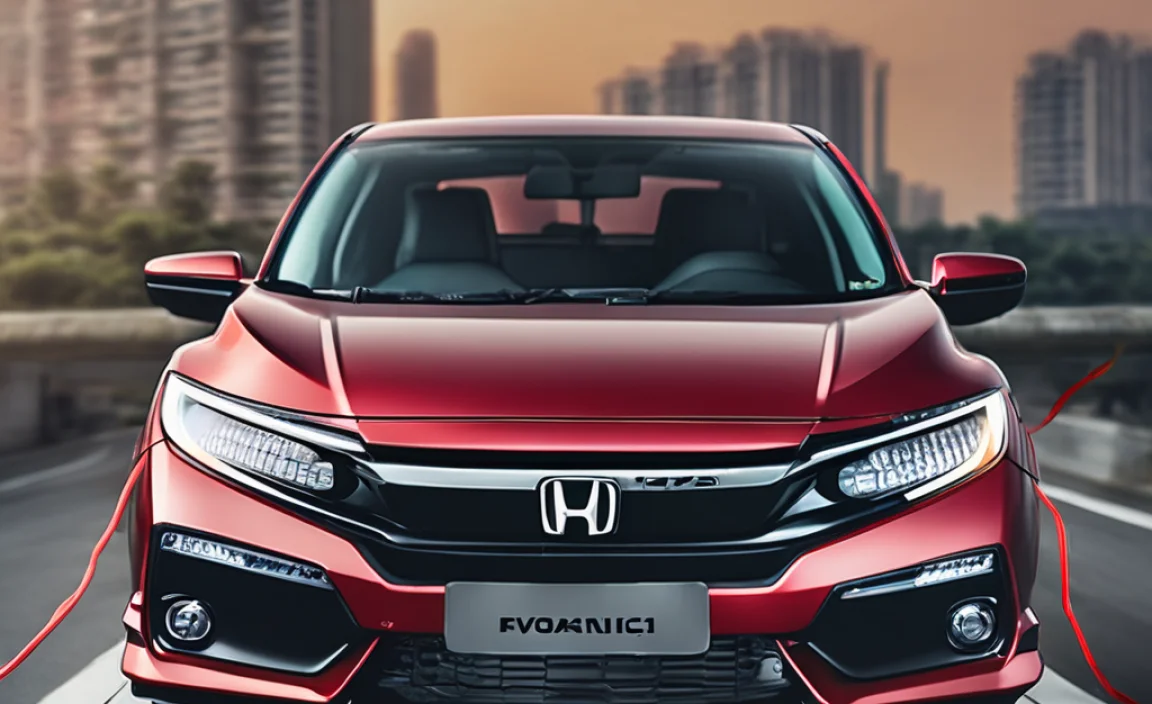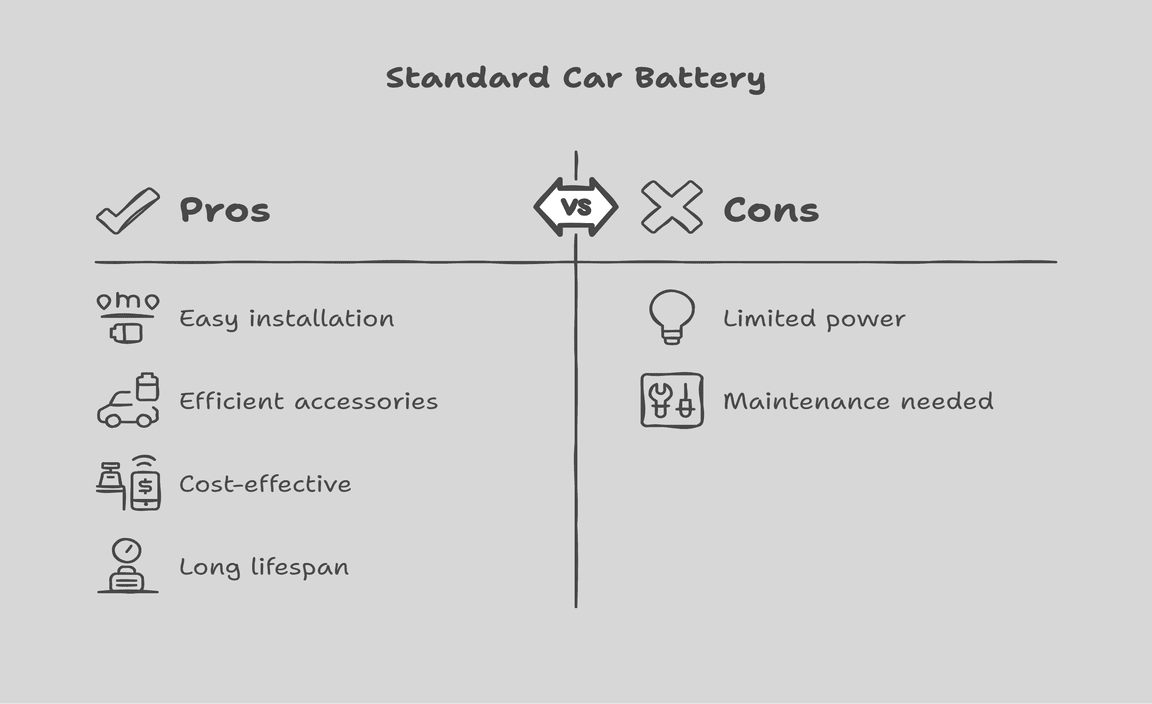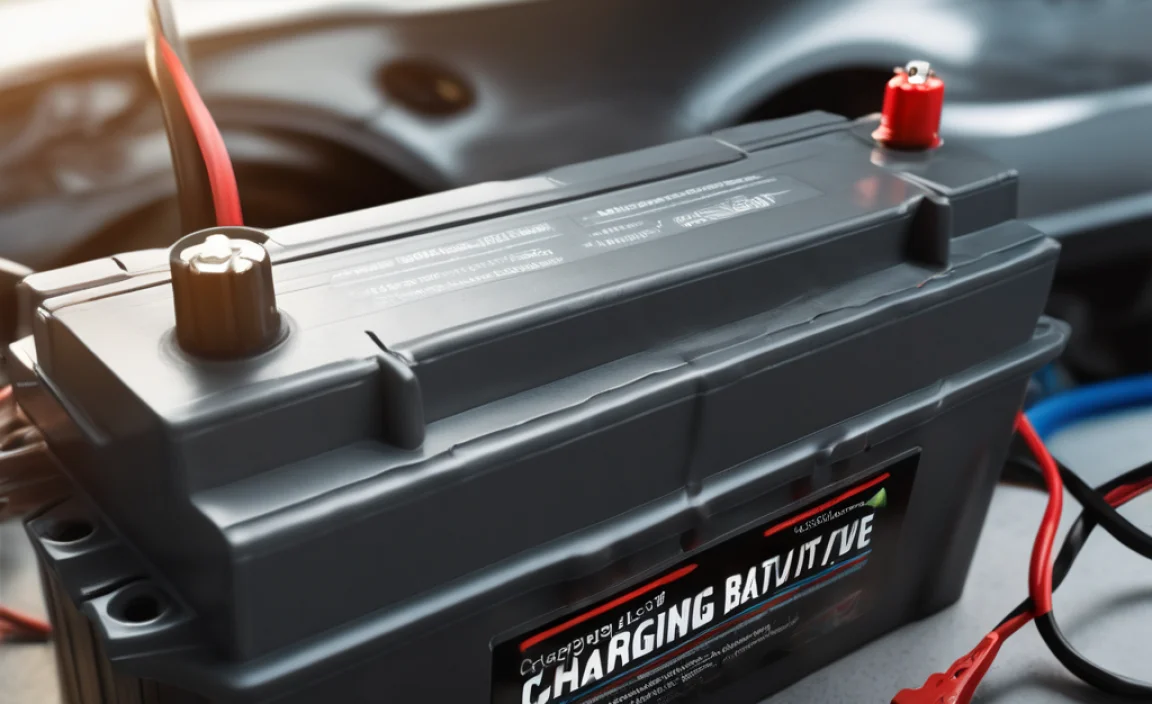Your guide to finding affordable EV batteries for electric cars offers practical tips on understanding options, extending battery life, and making smart replacement choices without breaking the bank. Drive confidently with cost-effective power solutions.
Thinking about an electric car but worried about the battery price? You’re not alone. The battery is a big part of an EV, and its cost can seem high. But what if there are ways to make it more affordable? This guide is here to help. We’ll explore the world of EV batteries, focusing on how you can get the best value without sacrificing quality.
We’ll break down what makes EV batteries cost what they do and look at options for finding a “cheap EV battery for electric cars.” You’ll learn about different battery types, how to keep your current battery healthy for longer, and what to consider when it’s time for a replacement. By the end, you’ll feel much more informed and ready to make a smart decision for your electric driving journey.
Understanding EV Battery Costs
The heart of any electric car is its battery. These high-tech packs store a lot of energy, allowing your EV to travel significant distances. However, they are also often the most expensive single component in an electric vehicle. Understanding why this is the case is the first step to finding affordable solutions.
What Drives EV Battery Prices?
Several factors contribute to the cost of EV batteries:
- Materials: The raw materials used, like lithium, cobalt, nickel, and manganese, are essential and can be costly to mine and process. Prices for these commodities fluctuate on the global market, directly impacting battery production costs.
- Manufacturing Complexity: Building an EV battery is a highly sophisticated process. It requires advanced factories, precise engineering, and strict quality control to ensure safety and performance.
- Research and Development: Carmakers and battery manufacturers invest heavily in R&D to improve battery technology, increase energy density, speed up charging, and enhance safety. These upfront costs are factored into the price.
- Capacity and Range: Larger batteries that offer greater driving range naturally cost more due to the increased amount of materials and complex engineering involved.
The Myth of a “Cheap” New EV Battery
When we talk about a “cheap EV battery for electric cars,” it’s important to set realistic expectations. A brand-new, high-capacity battery pack for a modern electric vehicle is rarely “cheap” in the way a gasoline car’s engine might be considered. The technology is still evolving, and large-scale production is still scaling up compared to traditional car parts.
However, “cheap” can also mean cost-effective or value-driven. It’s about getting the most performance and longevity for your money. This guide will focus on that aspect: making smart choices to minimize your battery expenses over the life of your EV.
Finding Value: Options for Affordable EV Batteries
While a brand new, top-of-the-line battery might be out of reach for some budgets, there are several avenues to explore for more affordable options. These solutions range from considering less conventional battery choices to leveraging the used market.
Used and Refurbished EV Batteries
As more EVs hit the road, a secondary market for used and refurbished batteries is emerging. These batteries have been removed from vehicles that were totalled or had other major issues, but their battery packs may still have significant life left.
- Pros: Significantly lower cost compared to new batteries. Can be a viable option for older EVs where the cost of a new battery might make the car uneconomical.
- Cons: Battery health can vary greatly. It’s crucial to buy from reputable sellers who can provide diagnostic reports, warranty information (even if limited), and proof of proper handling. Performance and lifespan may be reduced compared to a new battery.
Reputable sources for used EV batteries are still developing, but look for specialized EV salvage yards or certified refurbishers. Always ask for documentation on the battery’s diagnostics before purchase.
Remanufactured Battery Packs
Remanufacturing takes used battery modules and rebuilds them to like-new specifications. This often involves replacing worn-out cells and testing the pack rigorously. It’s a middle-ground between used and new.
- Pros: Often comes with a better warranty than a used battery. Can offer performance closer to new at a reduced cost.
- Cons: Still relies on some original components; availability can be limited. Can be more expensive than simply buying a used battery.
Battery Swapping Services
Some EV manufacturers and third-party companies offer battery swapping. Instead of repairing or replacing your battery, you swap your old one for a fully charged, serviced unit. This is more common in certain markets and for specific EV models.
- Pros: Instant replacement, no waiting for charging or repair. Often involves a monthly subscription or per-swap fee, which some drivers find more manageable.
- Cons: Not widely available for all EVs. You don’t own the battery, which can affect long-term value. The subscription fees can add up over time.
Considering Battery Capacity
When buying a new or used EV, or even considering a replacement, think about the capacity you actually need. Many EVs come with different battery size options. A smaller battery pack will be cheaper upfront and lighter, though it will offer less range.
- Assess your driving habits: Do you mostly drive short distances in the city? Or do you frequently take long road trips?
- Factor in charging availability: If you have easy access to charging at home and work, you might not need the largest, longest-range battery.
Choosing a slightly smaller battery can significantly reduce the initial cost and might even be a more “affordable” option in the long run if your needs don’t require maximum range.
Extending Your Current EV Battery’s Lifespan
Before you even think about replacing your EV battery, the best way to save money is to make your current one last as long as possible. Proper care and charging habits can significantly extend its health and performance, delaying or even avoiding the need for an expensive replacement.
Smart Charging Practices
How you charge your EV battery plays a huge role in its long-term health.
- Avoid Extreme States of Charge: Regularly charging to 100% and letting the battery drop to very low levels (below 15-20%) can put stress on the battery chemistry. Aim to keep the battery between 20% and 80% for daily use for optimal longevity. Your car’s manual will often have specific recommendations.
- Limit Frequent DC Fast Charging: DC fast charging is incredibly convenient for long trips, but it generates more heat and can be harder on the battery than slower Level 1 or Level 2 charging. Use it when you need it, but rely on slower charging for most of your daily needs. According to the U.S. Department of Energy’s Alternative Fuels Data Center, “Frequent use of DC fast charging can accelerate battery degradation.” Learn more about EV charging basics here.
- Charge in Moderate Temperatures: If possible, avoid charging your EV in extreme heat or extreme cold. Both can stress the battery. Parking in a garage or shaded area can help.
Temperature Management
Batteries, like many electronic components, perform best within a certain temperature range. Extreme heat is particularly detrimental to lithium-ion batteries.
- Preconditioning: Many EVs have a “preconditioning” feature that allows you to set a departure time. This system can use grid power to bring the battery to an optimal temperature before you start driving, especially useful in very cold climates.
- Parking: Whenever possible, park your EV in a garage or shaded area to protect it from direct sun and extreme heat.
Driving Habits
Your driving style also impacts battery health.
- Smooth Acceleration and Braking: Aggressive acceleration and hard braking can put more strain on the battery than smooth, gradual inputs. Utilize regenerative braking features effectively.
- Avoid Overloading: While modern EVs are designed to carry passengers and cargo, consistently overloading the vehicle can put extra stress on all its components, including the battery.
Replacing Your EV Battery: What to Expect and Budgeting
When the time eventually comes to replace your EV battery, having a clear understanding of the process and costs will help you find the most affordable options.
The Replacement Process
Replacing an EV battery is a complex job that should only be performed by trained technicians. It’s not a DIY task for most people.
- Diagnosis: A qualified EV technician will first diagnose the problem. They will use specialized tools to assess the battery pack’s health and identify any faulty modules or components.
- Quoting: You’ll receive a quote for the replacement, including parts and labor. This is where you’ll want to explore your options (new, used, remanufactured).
- Removal: The old battery pack is carefully removed from the vehicle. This often requires specialized lifting equipment due to the weight of the battery.
- Installation: The new or refurbished battery pack is installed.
- Recalibration: The vehicle’s systems need to be recalibrated to recognize and work with the new battery pack.
- Disposal/Recycling: Used EV batteries contain valuable materials and hazardous components. They must be disposed of or recycled responsibly. Reputable repair shops will handle this process. The U.S. Environmental Protection Agency provides information on battery recycling.
Budgeting for a Replacement
The cost of an EV battery replacement can vary widely depending on the vehicle make and model, battery capacity, and whether you choose a new, used, or remanufactured part.
Factors influencing cost:
- Vehicle Model: Luxury EVs or those with very large battery packs will naturally cost more to replace.
- Battery Size (kWh): Generally, higher kilowatt-hour (kWh) batteries are more expensive.
- New vs. Used/Remanufactured: As discussed, used and remanufactured options are significantly cheaper than new.
- Labor Costs: The complexity of the replacement and the hourly rates of the technician or dealership will affect the final bill.
Table: Estimated EV Battery Replacement Cost Ranges (Illustrative)
Please note these are rough estimates and can vary significantly. Always get a specific quote for your vehicle.
| Battery Type | Estimated Cost Range (USD) | Typical Warranty |
|---|---|---|
| New OEM Battery | $5,000 – $20,000+ | 3-8 years / 60,000-100,000 miles |
| Remanufactured Battery | $3,000 – $10,000+ | 1-3 years / 12,000-36,000 miles |
| Used Battery (tested) | $1,000 – $5,000+ | 90 days – 1 year (often limited) |
When budgeting, look into any remaining warranty on your vehicle. Many EV manufacturers offer long warranties specifically for the battery pack (often 8 years or 100,000 miles, whichever comes first). If your battery is failing within this warranty period, the replacement could be covered.
Choosing a “Cheap EV Battery For Electric Cars”: Key Considerations
When you’re on the hunt for an affordable EV battery, whether it’s for a repair or a. If you’re buying a used EV, the battery is a critical factor. Here are the key things to keep in mind to ensure you’re making a smart, cost-effective choice.
Reputation of the Seller/Installer
This is perhaps the most crucial factor, especially when considering used or remanufactured options. A trustworthy seller or installer can be the difference between a great deal and a costly mistake.
- Do Your Research: Look for reviews, testimonials, and how long the business has been operating. Are they specialists in EV batteries?
- Ask for Documentation: For used batteries, request diagnostic reports detailing the battery’s state of health (SOH) and state of charge (SOC) at the time of sale. For installations, ensure they are certified EV technicians.
- Warranty is Key: Even a limited warranty on a used or remanufactured battery offers some peace of mind. Understand the terms clearly.
Battery Health and Lifespan Remaining
For used or remanufactured batteries, you need to understand how much life is left. A battery with 90% State of Health (SOH) will perform much better and last longer than one with 60% SOH.
- Diagnostic Tools: Technicians use specialized tools to read battery data such as SOH, cycle count, and temperature history.
- Understand the Metrics: SOH indicates how much capacity the battery retains compared to when it was new. Cycle count refers to the number of full charge/discharge cycles the battery has gone through.
Compatibility with Your Vehicle
Not all EV batteries are interchangeable. You must ensure that the battery you choose is compatible with your specific make, model, and year of car.
- Consult Your Vehicle Manual: This is the definitive source for your car’s specifications.
- Professional Advice: A good EV repair shop can confirm compatibility and source the correct battery for you.
Total Cost of Ownership
A “cheap” upfront price isn’t always the most affordable in the long run. Consider the total cost of ownership.
- Lifespan: A cheaper used battery might fail sooner, leading to another replacement cost sooner than a more expensive new one would.
- Performance: A lower SOH battery might offer significantly less range, impacting your daily usability and potentially leading to increased charging frequency, which can further degrade the battery.
- Installation Costs: Factor in the labor involved, which can be substantial.
A cheap EV battery for electric cars” is best achieved by balancing upfront cost with expected lifespan, warranty, and performance. It’s about smart investment, not just the lowest price tag.
FAQs: Your EV Battery Questions Answered
What does “SOH” mean for an EV battery?
SOH stands for “State of Health.” It’s a percentage that tells you how much capacity your battery currently has compared to when it was brand new. For example, an SOH of 85% means the battery can hold 85% of its original charge.
How long do EV batteries typically last?
Most EV batteries are designed to last for many years and hundreds of thousands of miles. Many manufacturers offer warranties of 8 years or 100,000 miles (whichever comes first) for their battery packs. With good care, they can often continue to function well beyond that.
Can I install a used EV battery myself?
It is generally not recommended for car owners to attempt to install an EV battery themselves. These are high-voltage, heavy, and complex systems that require specialized tools, safety equipment, and training to handle correctly. Incorrect installation can be very dangerous and can damage the battery or the vehicle.
What happens to old EV batteries?
Old EV batteries are either recycled or repurposed. Recycling plants recover valuable materials like lithium, cobalt, and nickel for use in new batteries or other products. Some older batteries can also be repurposed for less demanding applications, like stationary energy storage, before they are finally recycled.
Is it cheaper to buy an EV with a smaller battery?
Yes, typically EVs with smaller battery packs (offering less range) are cheaper to purchase than those with larger, longer-range battery options. This can be a way to get into EV ownership at a lower price point if you don’t need the maximum possible range.
When should I consider replacing my EV battery?
You should consider replacing your EV battery when its capacity has significantly degraded, affecting your driving range to an unacceptable degree, or if the battery is experiencing charging issues or a warning light has appeared. If your car is still under its warranty for the battery, contact the manufacturer or dealership first, as replacement might be covered.
Are hybrid car batteries the same as EV batteries?
No, they are different. Hybrid cars have a smaller battery that assists the gasoline engine and is recharged through braking and the engine itself. Electric vehicles (EVs) have much larger battery packs that are the sole source of power for the electric motor and are recharged from an external power source (like a home charger or charging station).




